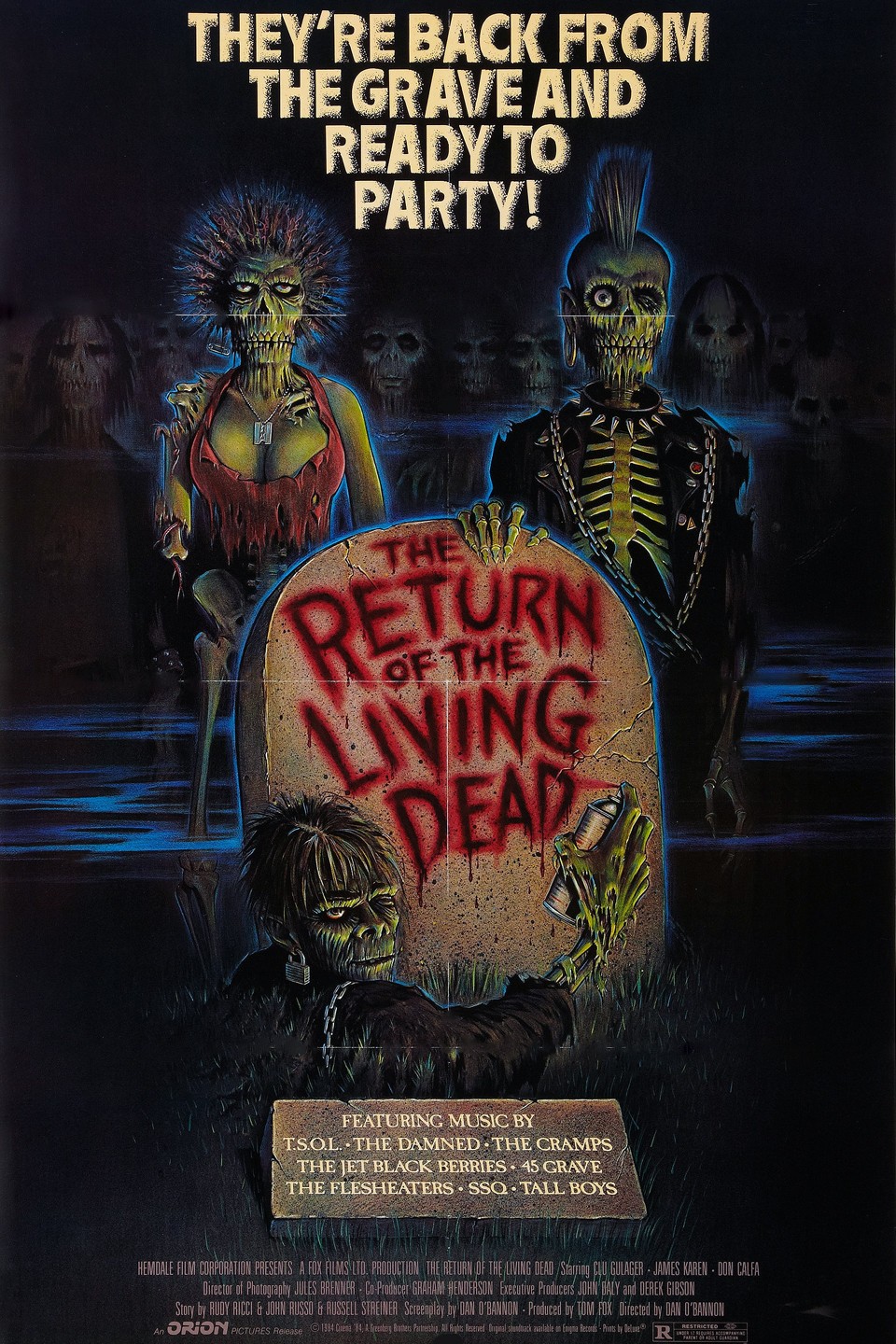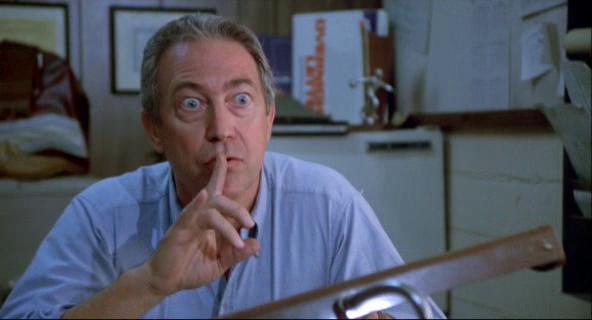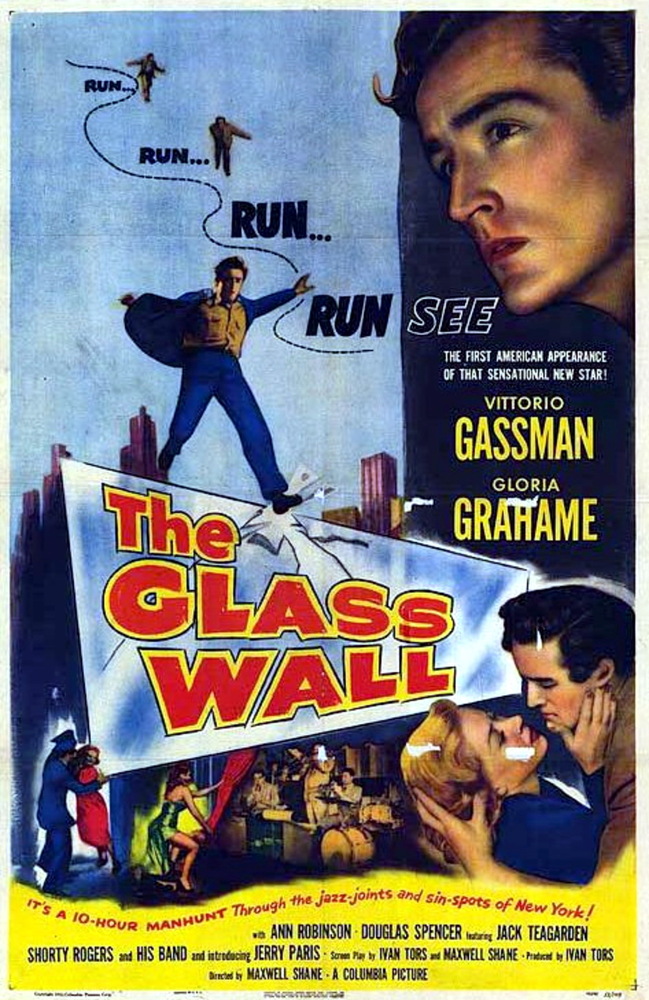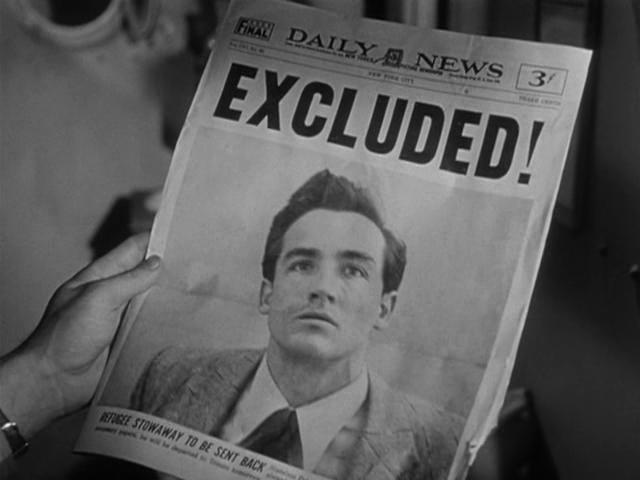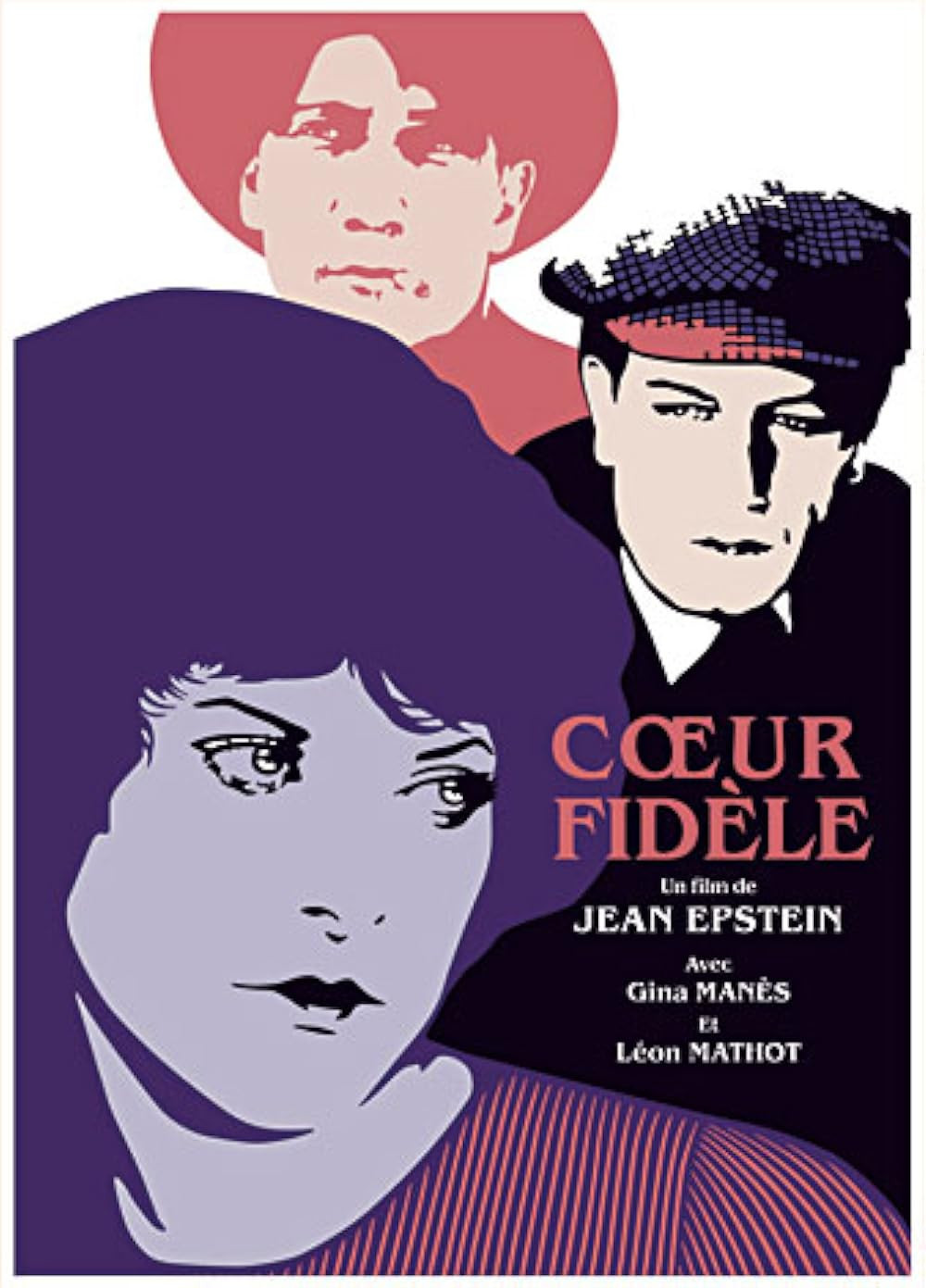Director: Dan O’Bannon
Writer: Dan O’Bannon, based on a story by Rudy Ricci, John Russo and Russell Streiner
Stars: Clu Gulager, James Karen, Don Calfa, Thom Mathews, Miguel Nunez, Brian Peck, John Philbin, Linnea Quigley, Beverly Randolph, Jewel Shepard and Mark Venturini
Index: 2023 Centennials.
The Glass Wall isn’t the only picture featuring someone born on 28th November, 1923, but The Return of the Living Dead must be about as different a feature as is comfortably imaginable. It was released over thirty years later, in 1985, and everyone and everything in it is apparently true. Well, that’s what it says on screen, so it must be real, right? Of course, it isn’t, but it does have plenty of fun with the conceit that the events that took place in George A. Romero’s pioneering 1968 zombie movie, Night of the Living Dead, were based on real life events. There was a chemical spill at the VA hospital in Pittsburgh that released 2-4-5-Trioxin and it made corpses jump as if they were alive. Somehow Romero got wind of the story and built a script around it. Meanwhile, those corpses, stored carefully in barrels, made their way, through typical military transportation screw up, to the Uneeda Medical Supply warehouse in Louisville, Kentucky, where they’ve been stored in a basement because nobody bothered to call the military phone number on the barrels.
Now, there is another important connection to Night of the Living Dead, namely writer John Russo, who co-wrote both films. The first was with Romero, with whom he had an agreement that they could both effectively continue it into a series. Russo had the rights to the Living Dead part of the title ongoing, but Romero could make his own sequels to the story. So, while the latter went on to direct Dawn of the Dead, Day of the Dead and so on, Russo wrote a novelisation of Night of the Living Dead and then a sequel novel, Return of the Living Dead, upon which this was only theoretically based. It was enough for him to get a credit for original story, alongside Russell Streiner and Rudy Ricci, but the screenplay was written by Dan O’Bannon, who had also written Dark Star and Alien and was directing a movie for the first time, later suggesting that “I spent 37 years of my life not even being alive. Now I’m fulfilled.” Hilariously, when he did so, it was Russo who wrote the novelisation, meaning that he wrote two completely different books both called Return of the Living Dead.



